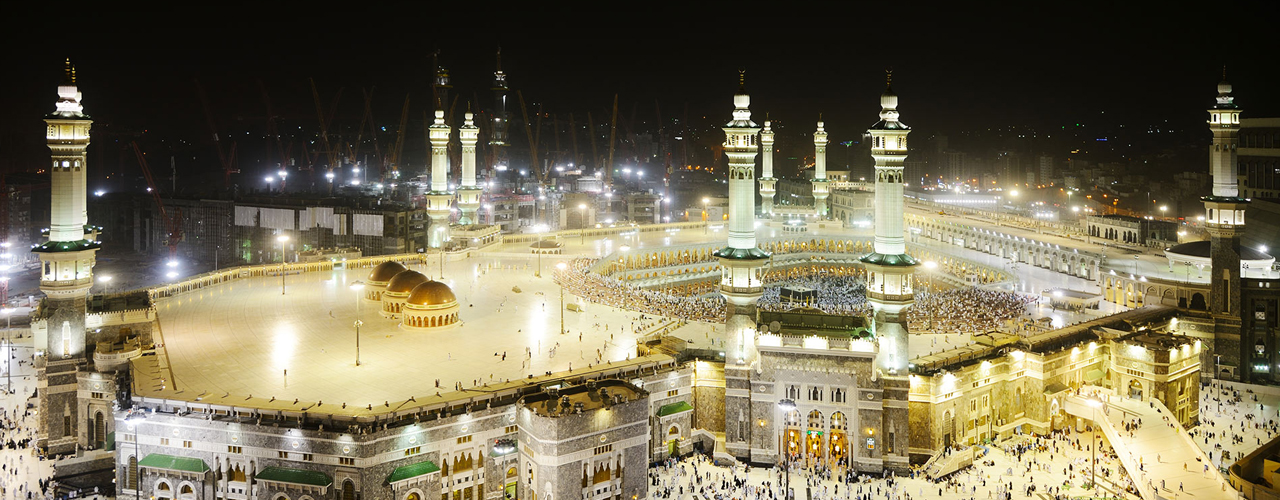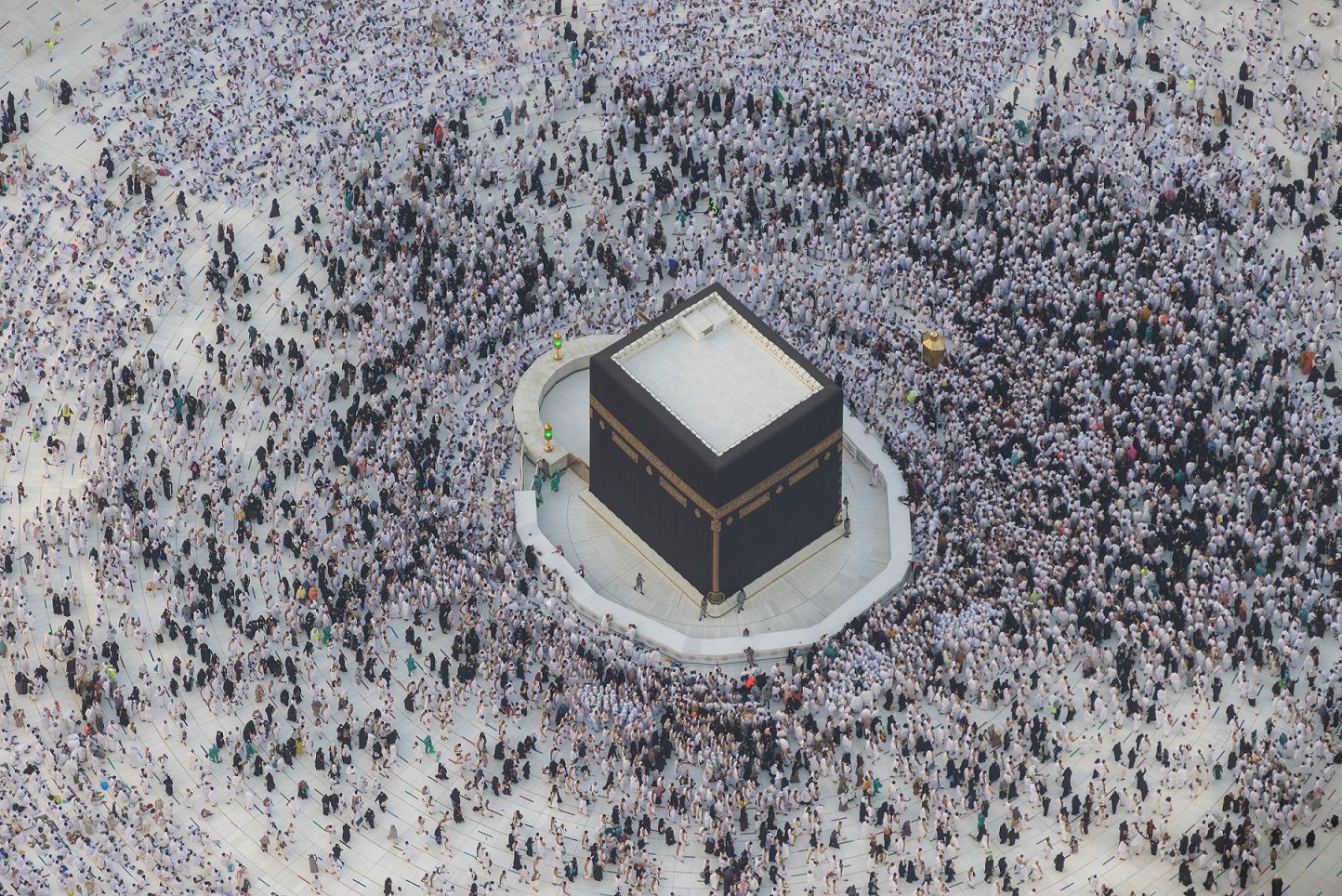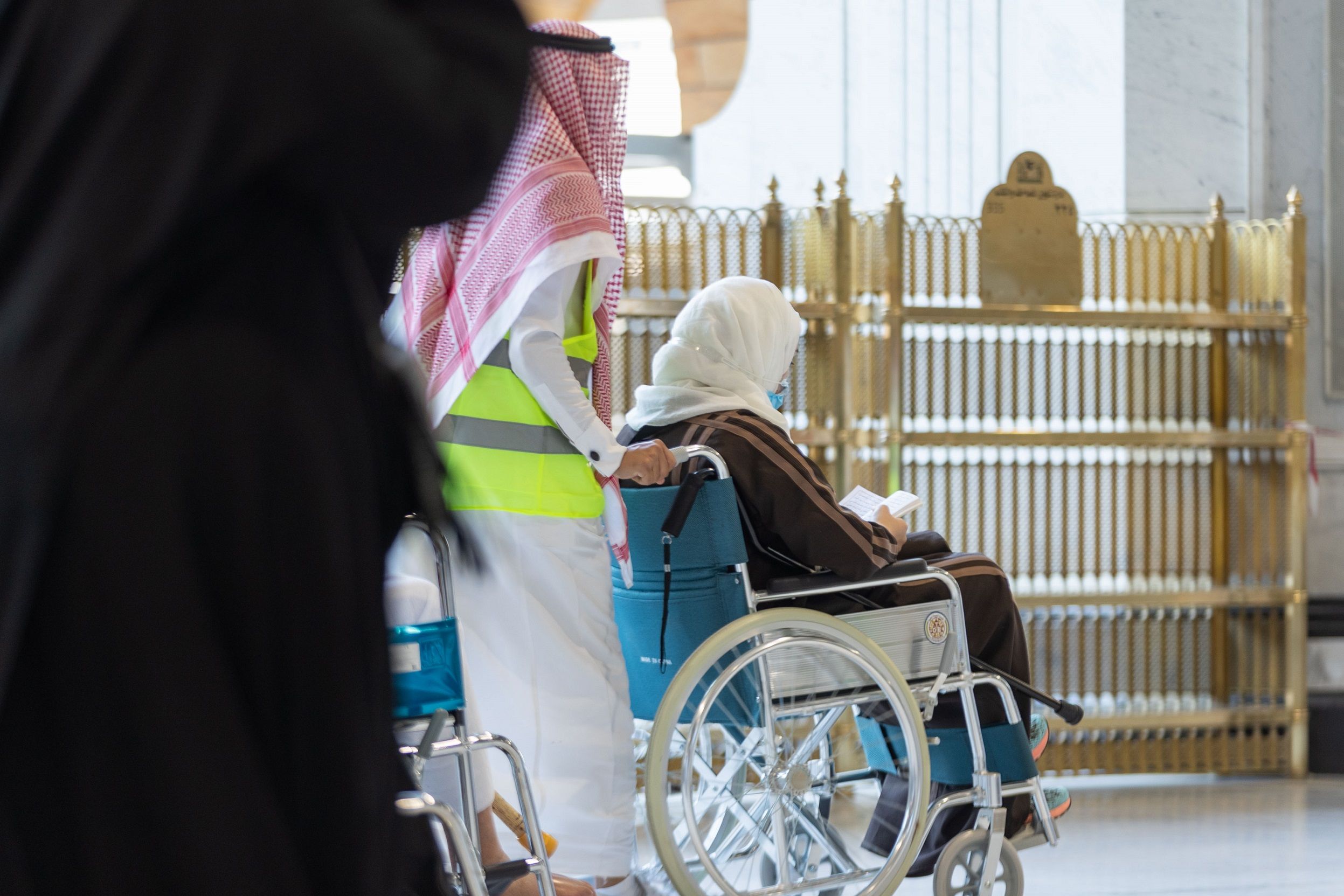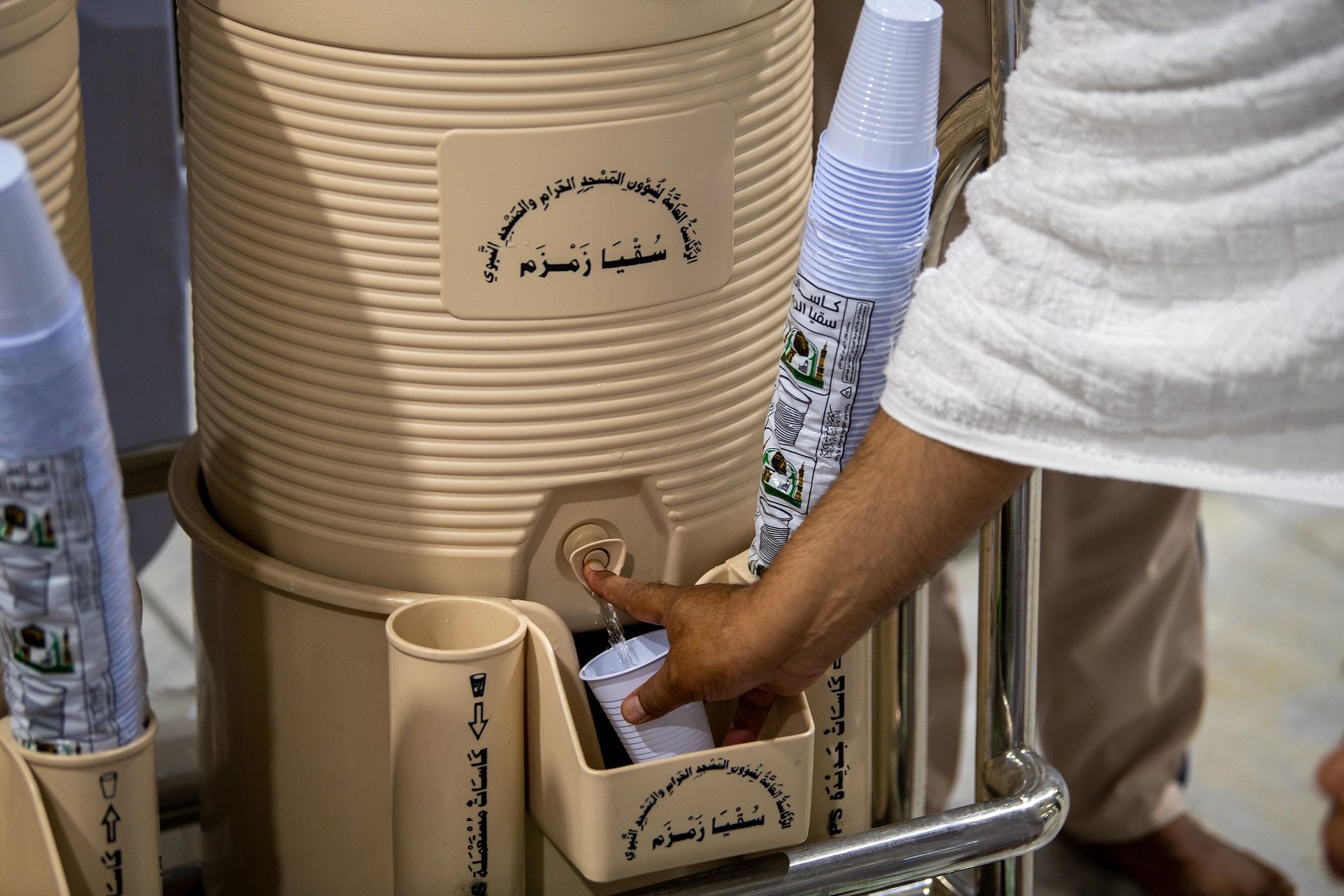The circumambulation (Tawaf) is one
of the pillars of Umrah and is an act of worship in which, by
directing our hearts and bodies to Allah, we are humbled confess
our needs to the Almighty. In this act of worship, the servant
circumambulates the House of Allah (the Kaaba), worshipping the
Lord of the House and drawing close to Him as He has prescribed.
Description of
Circumambulation
- Pilgrims performing Hajj or Umrah start circumambulation
from the corner where the Black Stone is located. On the
upper floors, a green sign indicates this position.
- Pilgrims performing Hajj or Umrah should say Takbir in each
round when they are parallel to the Black Stone, but it is
not a condition that Takbir should be uttered exactly at
this point. It is not the case that it is not valid to say
Takbir before or after it; rather one can do Takbir
somewhere near this point. So, if the pilgrim sees that he
has already passed the Black Stone, he can still utter
Takbir.
- When uttering Takbir, a pilgrim shall point with their hand
at the Black Stone, and then start circumambulating with the
Kaaba to his left (counterclockwise).
- Kissing the Black Stone is a Sunnah for those who are able
to do so, but this is difficult during the Hajj season
crowded days.
- One continues circumambulation, supplicating Allah and
praying humbly to Him.
- If one reaches the Yemeni corner, which precedes the Black
Stone, it is desirable to wipe over it if possible. During
the Hajj season, this will be difficult.
- The round ends at the corner of the Black Stone, which marks
the start place. Here, he/she points with their hand and
utters Takbir.
- One repeats this until completing seven rounds.
Circumambulation
Instructions
For a safe and Ideal
circumambulation:
- Walk on without stopping in the circumambulation courtyard
to prevent crowding and jostling
- Do not reverse the direction of circumambulation, whatever
the reasons
- The phrase Allahu Akbar (Allah is the greatest) inscribed on
the Kaaba cloth over the Black Stone indicates the corner of
the Black Stone
- A green light sign in the upper floor circumambulation
tracks indicates the alignment of the Black Stone
Visitors performing supererogatory
circumambulation shall follow instructions and regulations of
the times and places of circumambulation and give the
opportunity to Hajj and Umrah pilgrims as a priority shall be
given to Hajj and Umrah pilgrims.
When you circumambulate the Kaaba,
avoid crowded places. Help reduce crowding through proper entry
and exit from the Mataf (circumambulation area) and by praying
away from the circumambulators.








